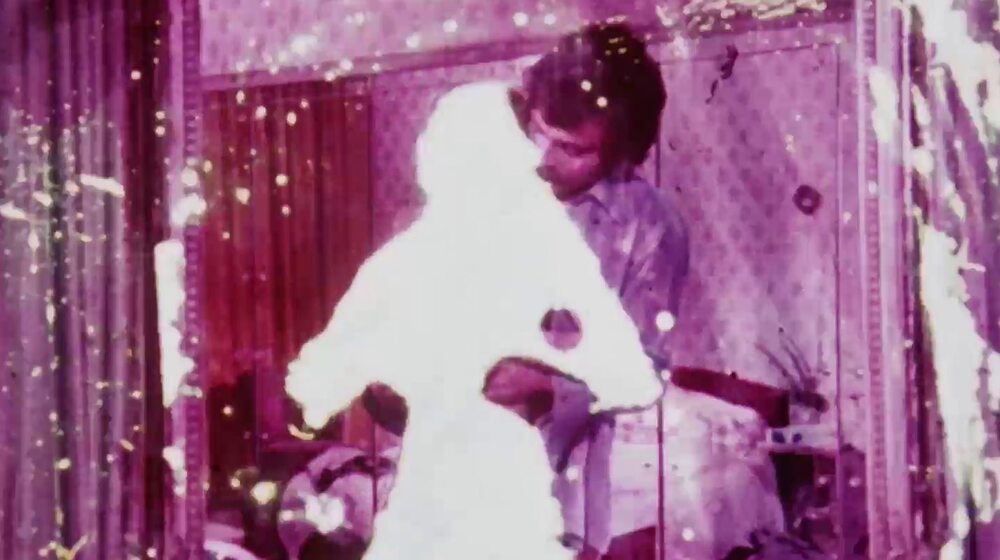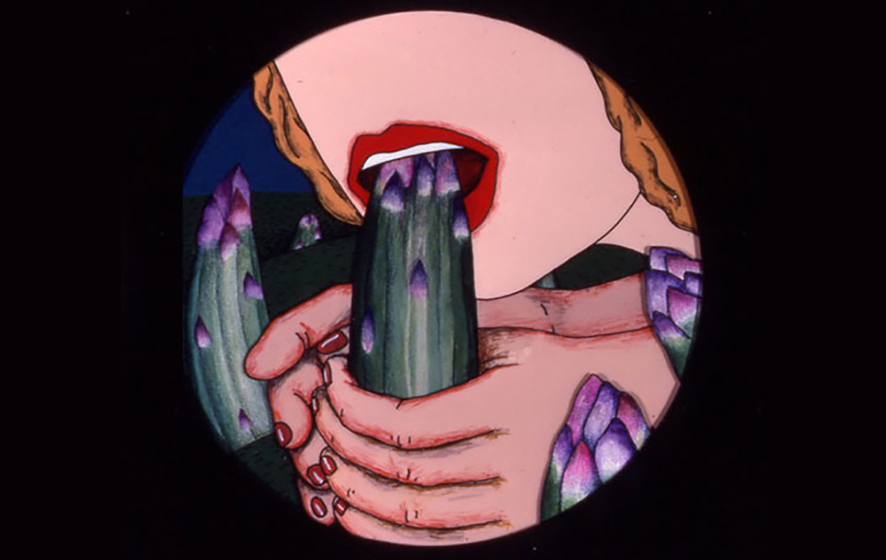Pen Point Percussion, Norman McLaren, 1951, Canada, 6'
This National Film Board of Canada documentary about one of the fathers of experimental animation shows Norman McLaren's working process directly on celluloid.
A Colour Box, Len Lye, 1935, United Kingdom, 3' 44''
This advertisement for cheap packaging to the sound of a popular song by Don Baretto and his Cuban orchestra, made by painting abstract patterns on celluloid and combining different techniques to apply colour and create textures, was probably the first direct film to be screened in front of an audience.
Film sans Caméra ST ST, Giovanni Martedi, 1975, Italy, 9'49''
Martedi developed his cinematographic techniques within the context of Arte Povera. Here, a single image, produced by directly bonding several pieces of coloured adhesive tape onto transparent celluloid, becomes a film when projected.
Peyote Queen, Storm de Hirsch, 1965, USA, 9'
Split screen, kaleidoscopic images and scratched celluloid form the basis of this work by Storm De Hirsch which makes up, together with Divinations and Shaman, the visionary trilogy known as The Colour of Ritual, the Colour of Thought, dedicated to the filmic representation of altered states of consciousness.
Natural morphing, Jose Antonio Soria, 2014, Spain, 1'23''
"This film was born when I found a roll of very scratched 35 mm film and, as they were people talking, I wanted to intervene by drawing each frame. The soundtrack is created using my own sound textures". JA Soria
Removed, Naomi Uman, 1999, USA, 6'
Using nail varnish remover, a product of feminine beauty, and bleach, a cleaning product also culturally and socially associated with the feminine, Naomi Uman erases, frame by frame, the object of desire - a naked female body - from a pornographic film, leaving a mysterious void. This film is a classic of the cinema without a camera genre, notable for its simple resources that produce a shocking effect charged with a critique of gender relations.
Alquimia del dolor, Eduardo Gion and Raúl Hidalgo, 2014, Spain, 4'
This film tells a story of global destruction based on a series of analogue photographs by Raúl Hidalgo. The altered celluloid, scratched and manipulated through the use of chemicals and paint, establishes an analogy between the deteriorated material and the narrative of the film.
Des scènes d'amour très réalistes avec force détails et gros planes, Maurice Lemaître, 1978, France, 15'39''
This film combines lyric poems with a pornographic film whose images have been refilmed, manipulated and distressed, creating a contrast between image and sound to explore new paths through desynchrony.
All Over, Emmanuel Lefrant, 2001, France, 6'15''
The film uses the technique of "dripping" inspired by Jackson Pollock's paintings, dropping chemicals onto the celluloid. In other words, in this case not only the use of the camera is dispensed with but also any manual intervention, resulting in hypnotic colours and shapes with their own random rhythm.





